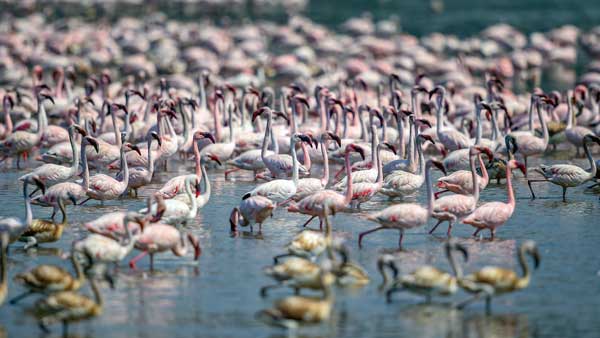
What are Ramsar Sites, and what is the significance of the listing?
New Delhi, Aug 05: India and China now have the most number of wetlands of international importance with 10 more Indian sites entering the Ramsar list, taking the total to 64.
The Ramsar list aims at "developing and maintaining an international network of wetlands, which are important for the conservation of global biological diversity and for sustaining human life, through the maintenance of their ecosystem components, processes and benefits".

What is Ramsar convention?
A Ramsar site is a wetland site designated to be of international importance under the Ramsar Convention.
The Convention on Wetlands is the oldest of the modern global intergovernmental environmental agreements. The treaty was negotiated through the 1960s by countries and non - governmental organisations concerned about the increasing loss and degradation of wetland habitats for migratory waterbirds. It was adopted in the Iranian city of Ramsar in 1971 and came into force in 1975.
The Convention's mission is "the conservation and wise use of all wetlands through local and national actions and international cooperation, as a contribution towards achieving sustainable development throughout the world".
Wetlands are among the most diverse and productive ecosystems. They provide essential services and supply all our fresh water. However, they continue to be degraded and converted to other uses.
The Convention uses a broad definition of wetlands. It includes all lakes and rivers, underground aquifers, swamps and marshes, wet grasslands, peatlands, oases, estuaries, deltas, and tidal flats, mangroves, and other coastal areas, coral reefs, and all human-made sites such as fish ponds, rice paddies, reservoirs, and salt pans.
How many ramsar wetlands do we have now?
With the 10 new sites, there are a total of 64 Ramsar sites across 23 states in India.
The ten new sites added to the Ramsar list are from five different states, which include six in Tamil Nadu and one each in Karnataka, Goa, Madhya Pradesh and Odisha, covering a total area of 12,50,361 hectares in the country.
The new Indian wetlands, which have bagged the coveted tag, are Tamil Nadu's Udhayamarthandapuram Bird Sanctuary, Koonthankulam Bird Sanctuary, Vellode Bird Sanctuary, Vedanthangal Bird Sanctuary, Gulf of Mannar Marine Biosphere Reserve, and Vembannur Wetland Complex. Further, Karnataka's Ranganathittu Bird Sanctuary, Goa's Nanda Lake, Madhya Pradesh's Sirpur Wetland and Odisha's Satkosia Gorge. As per the officials, India is aiming at getting a Ramsar tag for 75 of its wetlands on the 75th year of Independence.
The importance of wetlands
According to New Zealand's Department of Conservation, "The many plant surfaces (in wetlands) act as filters, absorbing solids and adding oxygen to the water. Growing plants remove nutrients and play a cleansing role that protect the downstream environments."
They can also protect against flooding by acting as a sponge that traps and slowly releases surface water or by trapping sediment run-off, thus absorbing the shocks of extreme weather events that are likely to increase with the onset of climate change. They are also adept at absorbing greenhouse gases efficiently.
Why getting recognition such a big deal?
Identifying wetlands as Ramsar sites is important because this could bring about more targeted conservation action to save these important natural ecosystems.
The Ramsar Convention encourages the designation of sites containing representative, rare or unique wetlands, or wetlands that are important for conserving biological diversity. Once designated, these sites are added to the Convention's List of Wetlands of International Importance and become known as Ramsar sites.
What benefits when recognised globally?
"A Ramsar designation helps with planning the sustainable development of the area. Being a Ramsar site has meant that local people can practice sustainable agriculture, fishing, forestry and tourism, using the renewable resources of the Danube delta," according to World Wide Fund for Nature.


 Click it and Unblock the Notifications
Click it and Unblock the Notifications































